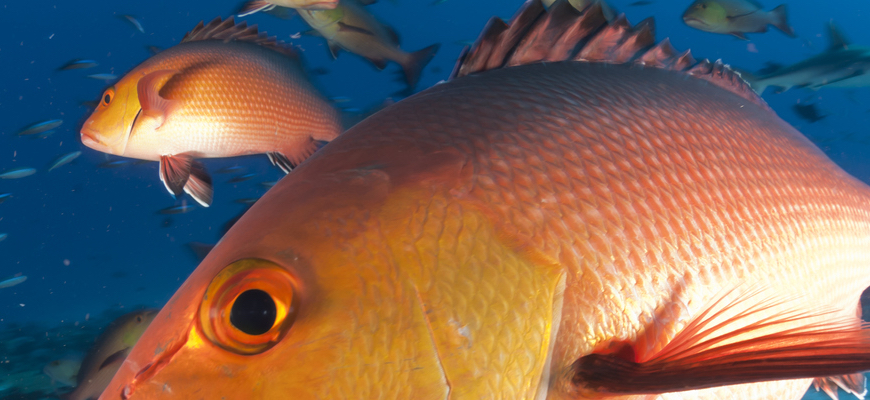
Climate change poses challenge to fisheries management
Researchers’ work on fish age aims to limit overfishing
Posted on: October 3, 2019; Updated on: October 3, 2019
By Chris Horn, chorn@sc.edu, 803-777-3687
Add this to the growing list of side effects wrought by climate change — fish in parts of the warming Atlantic Ocean are growing faster. That might seem like a good thing, but two fish biologists at the University of South Carolina say the phenomenon of younger, bigger fish could muddy the waters of vital fisheries management.
That’s why their NOAA-sponsored research of a faster technique to determine the age of fish could become an important tool in managing commercially important fish species such as red snapper.
“Knowing the typical size of a fish species at a particular age is key for fisheries managers,” says Joe Quattro, a university biology professor. “It’s how they monitor fish populations and make policy decisions to try to prevent overharvesting.”
When juvenile fish grow faster, Quattro says, there’s the potential to mistakenly assume that the larger-than-normal juvenile fish from a harvest sample indicate the species population is robust and can tolerate more harvesting pressure.
Traditionally, the age of fish is determined by teams of two or three inspectors who count the rings on otoliths, the bony “ear stones” that grow inside a fish’s head. Counting the annual growth rings isn’t as clear cut as you might think; that’s why multiple people count them and the average of their tabulations is used. The otoliths themselves must be laboriously cleaned and polished before visual examination.
Michelle Passerotti, a Ph.D. candidate in Quattro’s lab, is devoting her doctoral dissertation to study the use of an older technology called near-infrared spectroscopy to estimate the age of fish. Using this method, otoliths don’t have to be sectioned or polished, and the results are obtained in less than one minute. The problem is that the science of the spectroscopy technique hasn’t been fully worked out, although it’s clear there is a high degree of correlation between a fish’s age and the infrared spectroscopy’s absorbance reading of the otolith.
“If we can find a method closer to real time to determine the age of fish, that would be great for fisheries management,” says Passerotti, who aspires to work in federal fisheries management after earning her doctoral degree. “My research is focused on correlating the near-infrared spectroscopy with biochemistry data so that the fisheries management people can understand why it works — then they’ll be more apt to adopt it.”